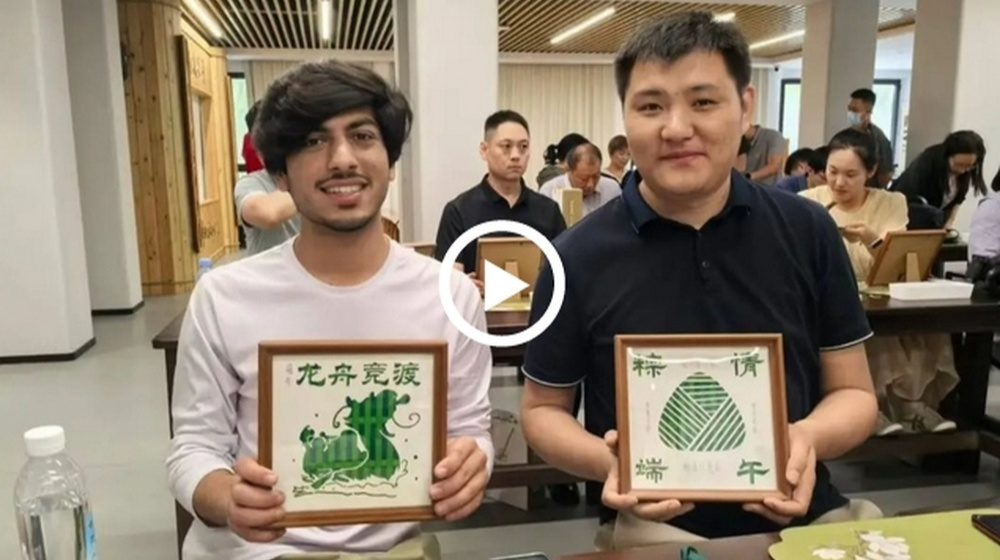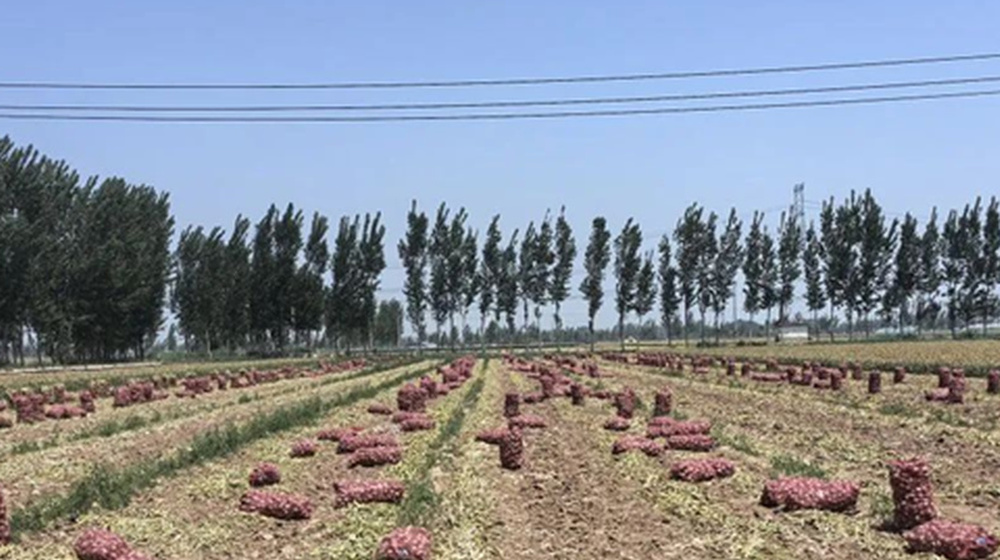Shanghe county in Jinan city – capital of East China's Shandong province – is leveraging scientific innovation to transform its garlic industry, boosting yields, increasing the incomes of farmers and advancing its rural vitalization.
In Baiqiao town, over 4,667 hectares of garlic fields are currently being harvested.
Once challenged by soil degradation and stagnant yields due to years of monoculture, the area is now seeing significant improvements through the introduction of modern agricultural practices.

The garlic is brought in and bound, ready to be taken away. [Photo/WeChat account: jinanagri]
To address these issues, Shanghe county partnered with institutions such as China Agricultural University and Shandong Agricultural University to establish nine so-called "science and technology courtyards".
These serve as field-based research hubs where professors and graduate students work directly with farmers – offering scientific guidance on soil management, fertilization and irrigation.
In a 3.07-hectare test field, researchers have implemented an integrated system for soil improvement, precision fertilization and smart irrigation.
As a result, soil organic content increased by 1.8 percentage points and compaction rates fell by 26 percent. Farmers following the new protocols have reported yield increases of over 50 kg per 0.067 hectare and income gains of about 500 yuan ($69.52).
What's more, to extend the benefits beyond production, the county has promoted value-added processing. Local enterprises, such as Jinan Shangyubao Food Technology Co Ltd, now process 15,000 metric tons of garlic annually, exporting it to more than 40 countries.
The garlic industry in Baiqiao town has grown vigorously to now generate total annual output worth more than 1 billion yuan, creating over 8,000 jobs and driving sustained economic development.

A food company in Baiqiao town processes garlic for commercial sale using specialized machinery. [Photo/WeChat account: jinanagri]
编辑:曹晓旭








